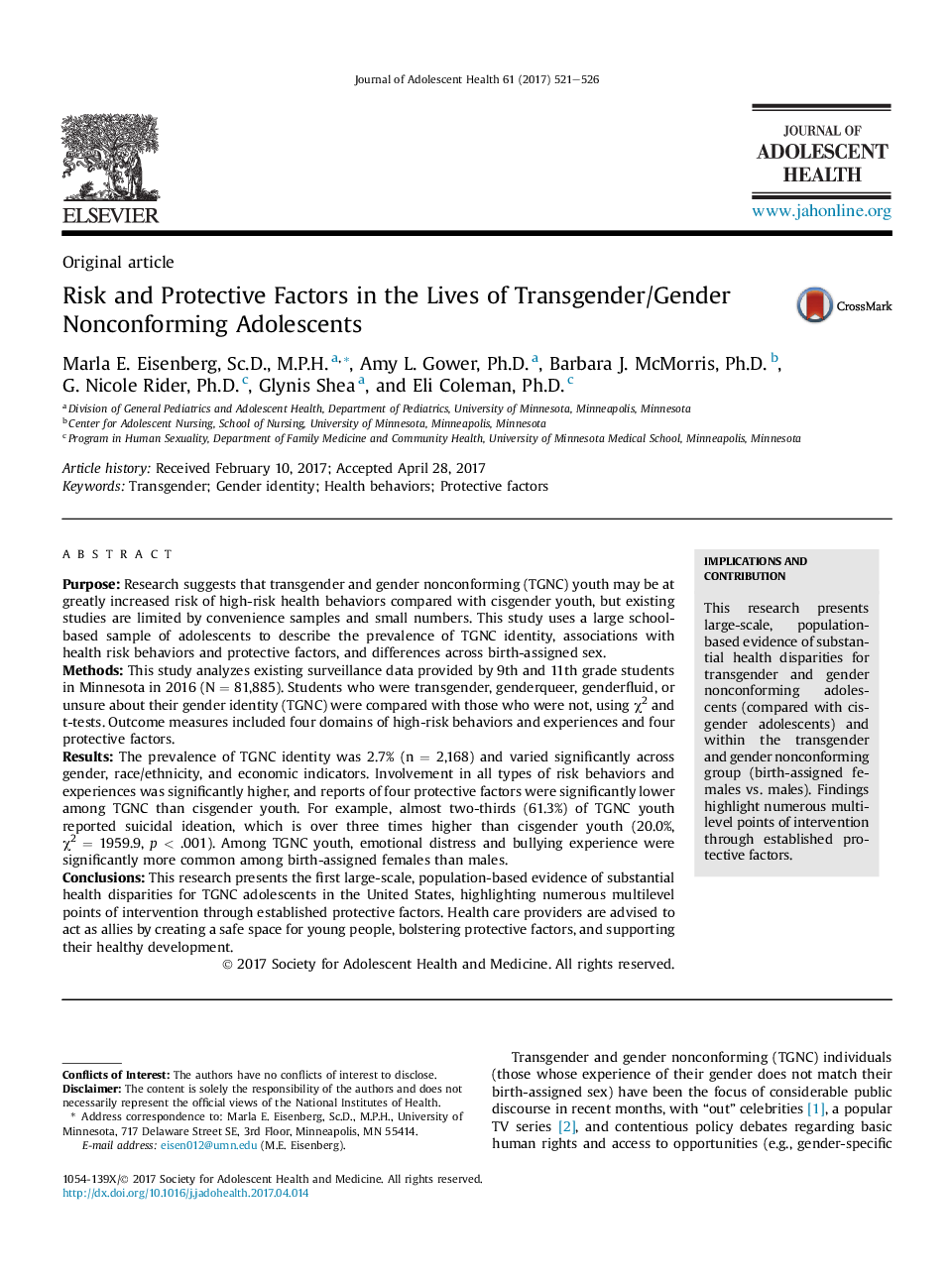| کد مقاله | کد نشریه | سال انتشار | مقاله انگلیسی | نسخه تمام متن |
|---|---|---|---|---|
| 5121169 | 1486692 | 2017 | 6 صفحه PDF | دانلود رایگان |
PurposeResearch suggests that transgender and gender nonconforming (TGNC) youth may be at greatly increased risk of high-risk health behaviors compared with cisgender youth, but existing studies are limited by convenience samples and small numbers. This study uses a large school-based sample of adolescents to describe the prevalence of TGNC identity, associations with health risk behaviors and protective factors, and differences across birth-assigned sex.MethodsThis study analyzes existing surveillance data provided by 9th and 11th grade students in Minnesota in 2016 (N = 81,885). Students who were transgender, genderqueer, genderfluid, or unsure about their gender identity (TGNC) were compared with those who were not, using Ï2 and t-tests. Outcome measures included four domains of high-risk behaviors and experiences and four protective factors.ResultsThe prevalence of TGNC identity was 2.7% (n = 2,168) and varied significantly across gender, race/ethnicity, and economic indicators. Involvement in all types of risk behaviors and experiences was significantly higher, and reports of four protective factors were significantly lower among TGNC than cisgender youth. For example, almost two-thirds (61.3%) of TGNC youth reported suicidal ideation, which is over three times higher than cisgender youth (20.0%, Ï2 = 1959.9, p < .001). Among TGNC youth, emotional distress and bullying experience were significantly more common among birth-assigned females than males.ConclusionsThis research presents the first large-scale, population-based evidence of substantial health disparities for TGNC adolescents in the United States, highlighting numerous multilevel points of intervention through established protective factors. Health care providers are advised to act as allies by creating a safe space for young people, bolstering protective factors, and supporting their healthy development.
Journal: Journal of Adolescent Health - Volume 61, Issue 4, October 2017, Pages 521-526
